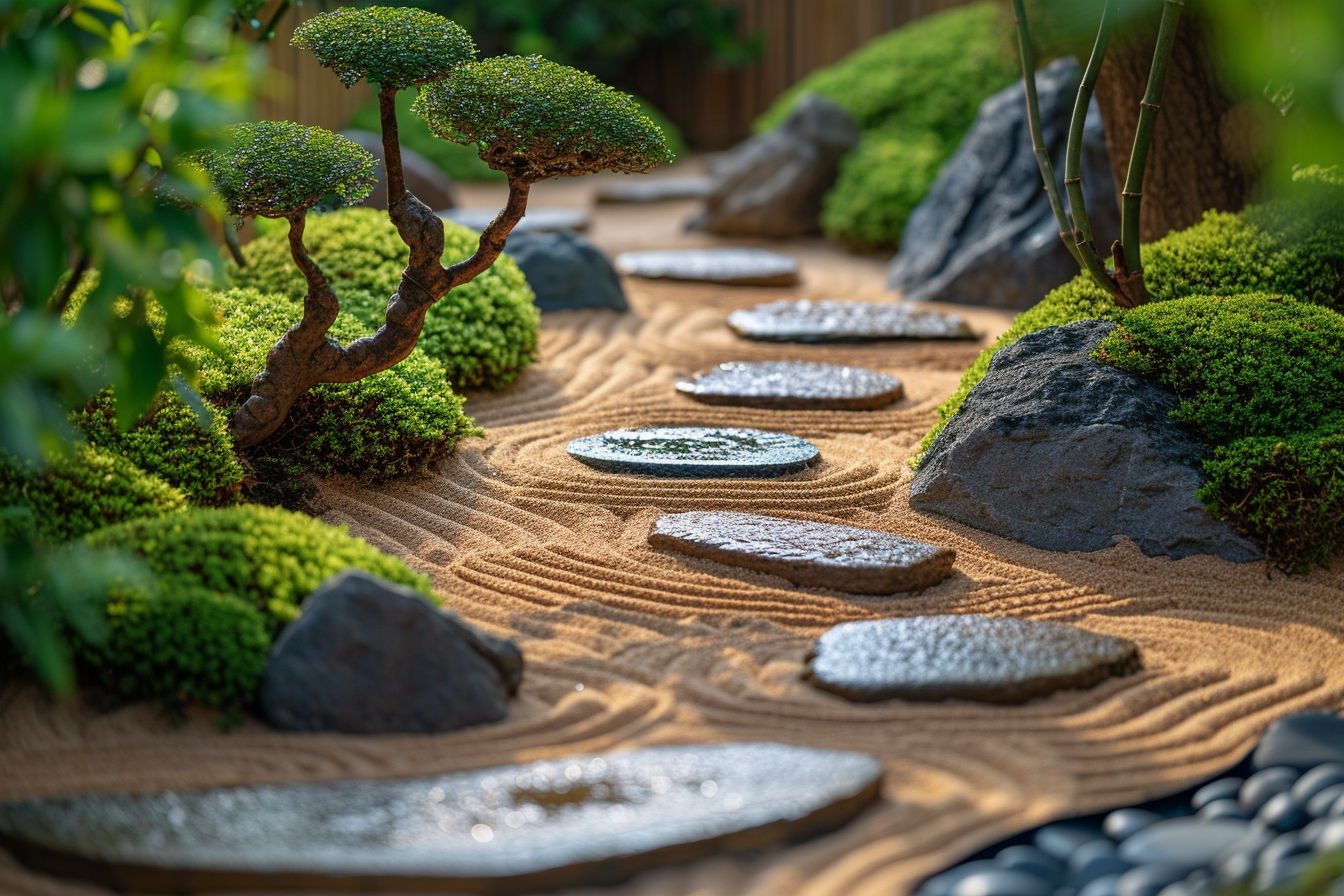Origins steeped in Japanese tradition, the Zen garden represents a minimalist and meditative haven. Known also as karesansui, which means "dry mountain water," these tranquil spaces echo the essence of nature, using a combination of rocks, gravel, sand, and sparse vegetation. Crafting a Zen garden in your outdoor space can bring a sense of peace and serenity, providing a unique area for reflection, meditation, and escape from the bustling world around you.
Embracing zen philosophy
Understanding the underlying philosophy of Zen gardens is crucial to creating one that authentically induces tranquility and inner peace. At the heart of Zen is the quest for simplicity, balance, and harmony. Integrating this mindset into the design process is fundamental. Zen gardens typically avoid clutter and over-decoration, focusing more on space, form, and textures that promote a sense of calm.
Choosing the right location
Selecting an ideal spot for your Zen garden necessitates careful consideration. Seek out a location where the garden can be in communion with the natural elements, yet not be disturbed by frequent activities. A place that offers privacy and quiet is essential, as the environment should serve as a secluded sanctuary away from the distractions of daily life. The orientation in relation to the sun and shade will also affect the atmosphere and the plants you can incorporate.
Design features of zen gardens
The art of rocks and sand
Rocks and sand or gravel are quintessential components of a Zen garden. They symbolize mountains, islands, rivers, and seas, creating a miniature and abstract representation of nature. Large rocks can be arranged to form the structure and provide focal points. Smaller pebbles and sand, when raked into patterns, instill a sense of water rippling in the wind. Placement of these rocks is often guided by intuition and a desire for balance rather than strict rules.
Plant selection: less is more
In a Zen garden, every plant counts. Opt for a sparse selection of vegetation, focusing on the shapes and colors that complement the rocks and sand. Traditional plants include moss, which represents forests, and low, hardy bushes like azaleas. Grasses and bamboo can add to the atmosphere with their gentle swaying and rustling. Remember to choose species that thrive in your climate and require minimal upkeep to maintain the garden’s calming essence.
Enclosures and borders
Adding borders or enclosures can enhance the seclusion and define the space dedicated to your Zen garden. Bamboo fencing, wooden borders, or even natural hedges can serve as a practical yet aesthetically pleasing way to demarcate the sacred area.
Incorporating water elements
While karesansui gardens traditionally represented water with sand patterns, incorporating actual water elements can add an additional layer of tranquility through sight and sound. A small fountain or a shallow reflection pond can elevate the sensory experience of your Zen garden. Still, ensure these elements retain the garden’s minimalist nature without becoming overpowering.
Pathways and stepping stones
Creating meandering pathways with stepping stones can add a purposeful flow, guiding reflections as one walks mindfully through the garden. The paths should be simple and natural, complementing the laid-back feel of the garden while encouraging a reflective journey.
The importance of maintenance
Maintenance is an intrinsic aspect of Zen garden’s appeal, offering a form of meditation in itself. Regular raking of the gravel and care for the plants becomes a quiet, reflective practice, allowing for a personal connection to the garden’s evolving beauty.
Personal touches and symbolism
Introducing personal touches or symbolism can provide depth and meaning to your Zen garden. Items such as a statue of Buddha, lanterns, or specific rock formations can be powerful symbols that resonate with your personal path to tranquility. These features should be incorporated thoughtfully and sparingly to maintain the balance and simplicity of the overall design.
Lighting considerations
Careful consideration of lighting can dramatically enhance the ambiance of a Zen garden. Soft, indirect lighting can help illuminate paths and highlight key features without disrupting the garden’s serene atmosphere. Solar-powered lights that cast gentle glows are an environmentally friendly choice that can complement the natural feel of the space.
Accessibility and viewing points
Consider viewing points around the garden where one can sit and absorb the tranquility. Benches or sitting rocks strategically placed can provide spots for contemplation. Additionally, if mobility is a concern, ensure that paths are wide and even for easy accessibility.
Aligning elements to create harmony
Drawing on Zen principles, the alignment of garden elements is fundamental in manifesting a harmonious whole. Balance and symmetry are less about exact replication and more about the visual and spiritual equilibrium of the garden. Intuition and a sense of what ‘feels right’ often guide the placement and proportion of elements, culminating in an outdoor space that induces tranquility.
Continuous evolution
Recognize that a Zen garden is not static; it is constantly changing and evolving. With the seasons, the garden matures, and the caretaker’s perspectives might shift. Embrace this ongoing process, understanding that change and impermanence are inherent parts of the Zen garden’s charm.
summary

Creating a Zen garden is a deeply personal and artistic endeavor that can result in a serene oasis right in your backyard. By following these essential tips and embracing the principles of Zen, you have the opportunity to design a space that fosters tranquility, mindfulness, and inner peace. Whether you rake the sand to mimic the rhythmic patterns of flowing water or sit quietly by a rock, reflecting on the ephemeral nature of life, a Zen garden can serve as a profound and beautiful testament to the philosophy it represents. Your Zen garden awaits – a canvas on which to paint your vision of serenity and balance.


